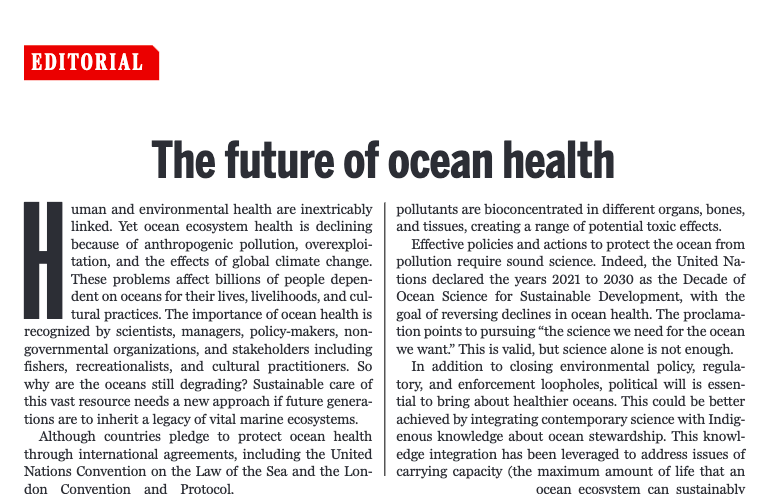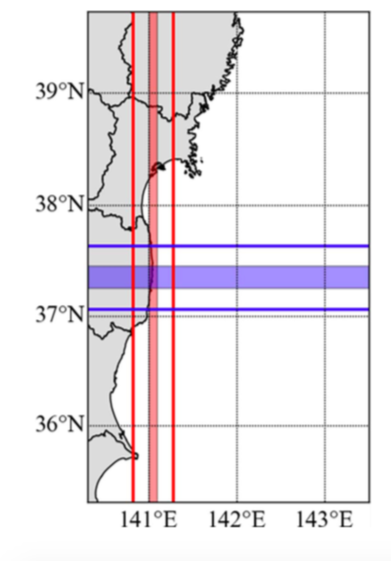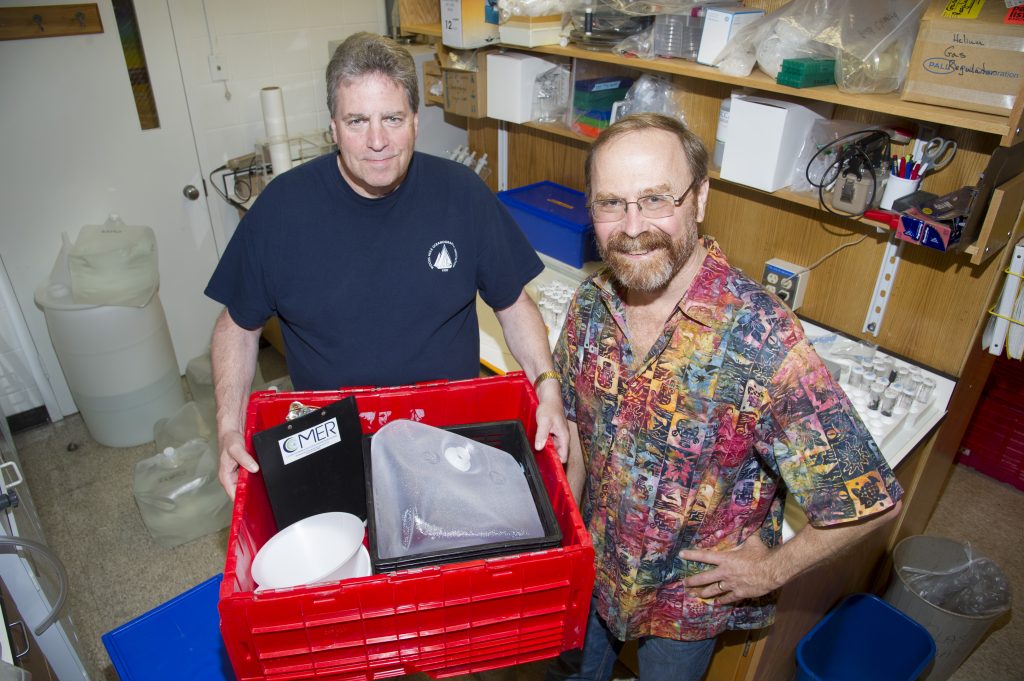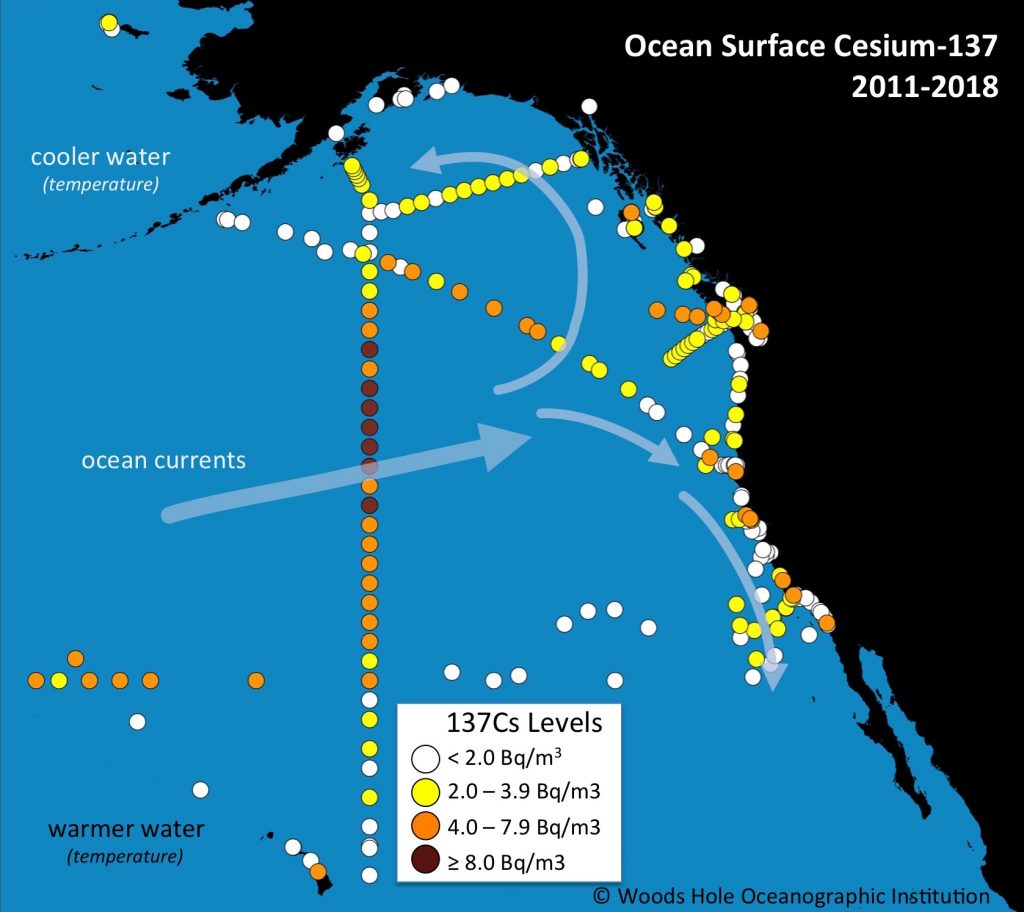Posts Tagged ‘Fukushima’
The future of ocean health
Human and environmental health are inextricably linked. Yet ocean ecosystem health is declining because of anthropogenic pollution, overexploitation, and the effects of global climate change. These problems affect billions of people dependent on oceans for their lives, livelihoods, and cultural practices. The importance of ocean health is recognized by scientists, managers, policy-makers, nongovernmental organizations, and…
Read MoreMinimizing harm: the concrete option for Fukushima tanks waste
Minimizing Harm: the concrete option for solving the accumulation of radioactively contaminated water at the Fukushima Daiichi Nuclear Power Plant site A paper prepared by the Independent Expert Panel to the Pacific Islands Forum Dr. Arjun Makhijani, Dr. Ferenc (Jacob Rolf) Dalnoki Veress, Dr. Robert Richmond, Dr. Anthony Hooker, Dr. Ken Buesseler12 June 2023 Abstract:…
Read MoreComments on Nov. 2021 Fukushima Radiological Impact Assessment
On November 17, 2021 TEPCO (Tokyo Electric Power Company) made public a Radiological Impact Assessment concerning the discharge of water stored at the Fukushima Dai-ichi nuclear power plant site into the ocean. This water, treated with the ALPS method, was found in their assessment to likely have minimal effects on the public and environment and…
Read More10 Years after Fukushima: I’m still worried
It has been 10 years since the accident at the Fukushima Dai-ichi nuclear power plants in Japan, and worries still abound. Read this opinion piece by Ken Buesseler: 10 Years After Japan’s Fukushima Daiichi Meltdown, I’m Still Worried | Opinion Nearly 10 years ago, I boarded a flight from Boston to Tokyo, filled with anxiety.…
Read MoreWhat I Learned from an Ocean Radioactivity Testing Project
Enlisting the public in water sampling after the Fukushima disaster helped build and spread scientific knowledge Read this Op-Ed by Ken Buesseler published online by Scientific American We live in a radioactive world. That simple fact about our planet kept coming to me in the weeks and months after March 11, 2011, when the…
Read More6 year update on Our Radioactive Ocean and findings off west coast
View Updated results from Our Radioactive Ocean – 6 years following the accident at Fukushima Dai’ichi Nuclear Power Plant.
Read MoreJune 16 – What we Talk About when we Talk About Radiation
12:00 Japan Time Station 28; 36N, 141.4E It’s been a while since I’ve seen a newspaper or checked the internet, but I seem to remember a fair bit of confusion in the media over how radiation is measured before we left. So here goes nothing. The most basic radiation detector provides its readings in counts.…
Read MoreJune 18 – Home Again, Home Again
12:50 a.m. Japan Time Station 32; 37N, 142E Just like that. The CTD is stowed, the last net is aboard. The engines have spooled up and we’re slowly putting the final station behind us, though we’ll initially head northwest to a point half way between Stations 32 and 25. From there, we’ll turn south and…
Read MoreJune 17 – Getting the Story
3:45 a.m. Japan Time Station 29; 36.5N, 142E We haven’t had much news out here on the ship the past two weeks other than our twice-daily satellite email uplinks. My wife, however, just sent me something that makes me a little sad. She said that when she tells people where I am one of the…
Read MoreJune 15 – In the Zone
2:00 a.m. Japan Time Station 25; 37.5N, 141.4E There are demi stations, standard stations, and super stations. Then there are super-duper stations. At a little before midnight, we arrived at Station 25, our closest approach to the Fukushima Daiichi nuclear power plant that is the source of the radiation we are trying to measure. We…
Read MoreJune 14 – The Cause of it All
12:00 p.m. Japan Time Station 23; 37.5N, 142E I’ve touched on marine chemistry, physical oceanography, and marine biology over the past few days, now it’s time to delve into the dark arts of marine geology. Dark because much of what marine geologists study takes place deep beneath the bottom of the ocean. Late last night…
Read MoreJune 13 – All Work, a Little Play
2:00 Japan Time Station 21; 25N, 142.5E We’ve entered a stretch that calls for us doing five so-called “super stations” interspersed with what we’ve termed “demi stations.” Our standard sampling station includes a CTD cast to 1,000 meters with a net on the wire that gathers phytoplankton from the top 100 meters, four Bongo net…
Read MoreJune 12 – Tracers II
12:00 Japan Time Station 18; 37N, 143E We’ll come back to tracers in a bit. There are a couple of changes to report, first. For one, the weather has eased considerably. Seas are easy and the sun is just barely shining through a hazy sky. About the only wind out there is whatever we can…
Read MoreJune 11 – Tracers
2:00 p.m. Japan Time 35N, 143E It’s Saturday, so I’m going to let someone else do some of my work for me today. In his book Seven-Tenths: Love, Piracy, and Science at Sea, WHOI’s David Fisichella does as good a job as anyone in describing the way that chemical oceanographers use tracers to study the…
Read MoreJune 10 – Lines in the Water
10:00 a.m. Japan Time Station 10; 38N, 144E Last night we came to the end of our first sampling line, the furthest offshore. Everyone was looking forward to a little down time (even the people on the midnight to noon watch) and there were grand plans floated to watch movies or get caught up on…
Read MoreJune 9 – Chasing Fish
3:00 p.m. Japan Time Station 9; 38N, 147E We had one good net haul after sunset yesterday and had a second around midnight cancelled due to weather that the biologists were sad to miss. Then early this morning, as soon as the sun came up, the net came back almost empty. What we were seeing…
Read MoreJune 6 – Why We’re Here
2:30 p.m. Japan Time 34.07N; 145.55E We’re on our way to the first sampling station. Now it’s all about finalizing water budgets—making sure we get enough water at the right depths to meet the needs of all the different groups who will be doing work on the ship and back on shore. It’s all about…
Read MoreJune 5 – Testing 1, 2 . . .
7:00 p.m. Japan Time 34 24N, 142 41E (100 nm west of Japan) Today was a test day, starting with the obligatory one long bell that signals all hands to muster at their emergency stations. For us in the science crew, that means we grab our life vests and survival suits and head to the…
Read MoreJune 8 – Connections
6:30 a.m. Japan Time Station 4; 35.50N, 147E Today is World Ocean Day. Sort of snuck up on me because the ship sort of exists outside of time and I’m not really looking at my calendar except to label my blog posts. Hard to imagine a more fitting place to spend the day. We now…
Read MoreJune 4 – To Sea
We are under way. At 2:30 p.m., our Japanese pilot came aboard (very dapper in his blue suit and fedora), a tug tied up to our stern, and by 3:00 sharp we had slipped our lines and were edging away from the dock into the busy Tokyo Harbor traffic. Tourists on the upper deck of…
Read More




